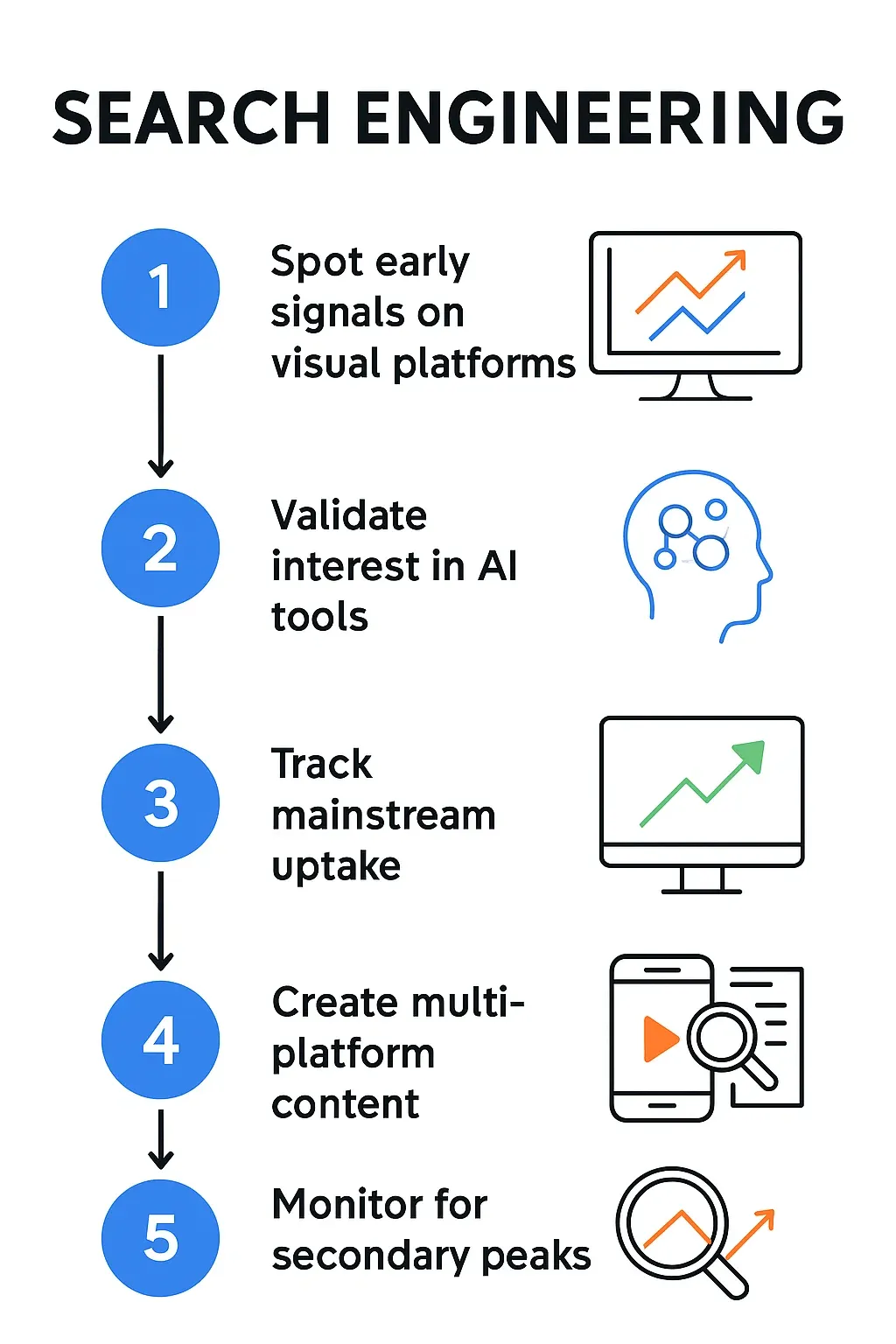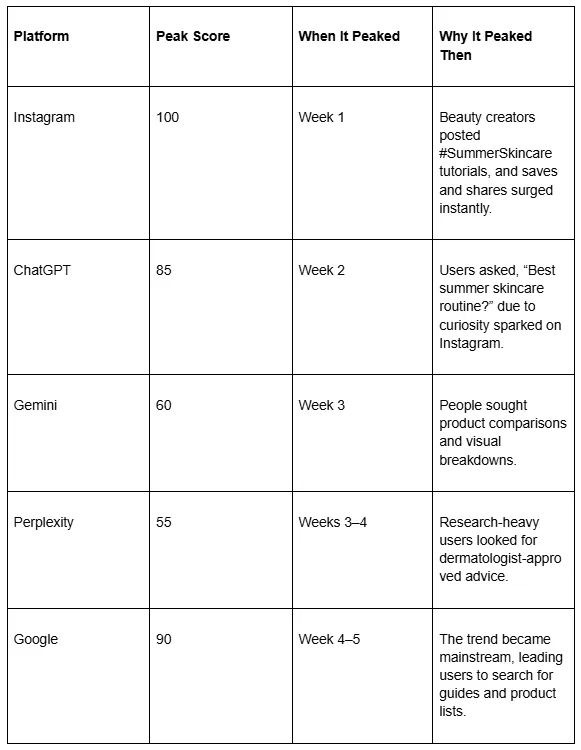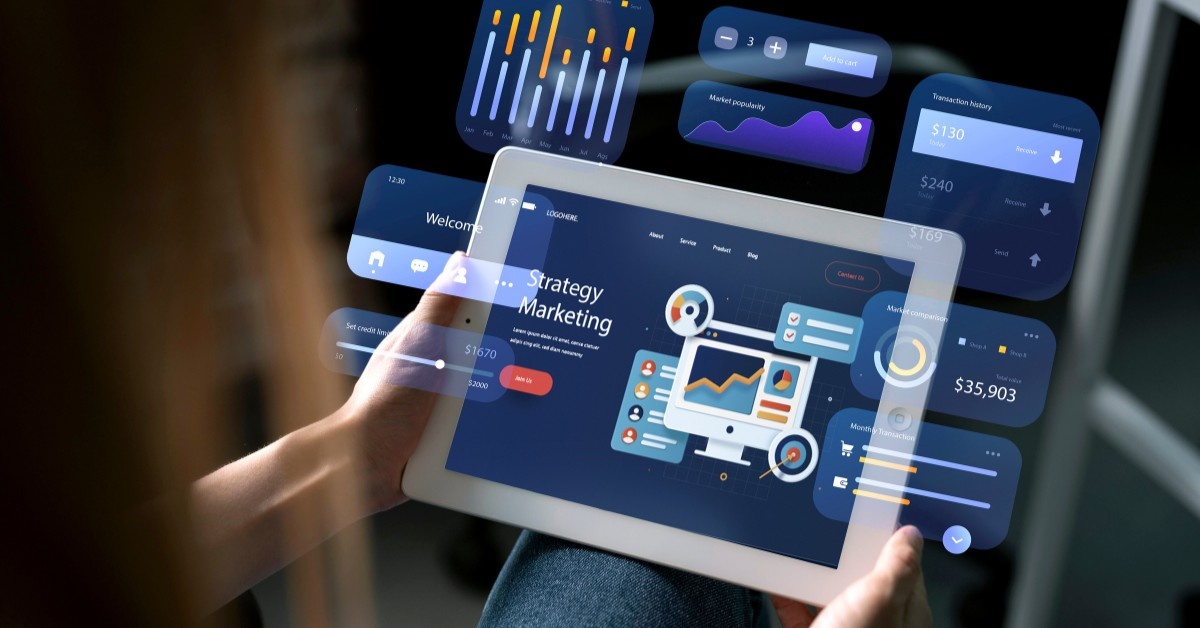How to Track Search Trends Across Google, AI Platforms, and Social Media
How to Track Search Trends Across Google, AI Platforms, and Social Media
If you’re not mapping trends across AI, social, and search right now, you’re bleeding the market.
In 2025, audiences discover, explore, and validate information across search engines, AI platforms, and social-first platforms. Each of these has its speed and pattern of adoption.
Trends now break on Instagram, get unpacked on ChatGPT, compared on Gemini, and only then get formalised through Google searches. By the time your SEO dashboards light up, the most valuable engagement windows may already have passed.
Today, search engineering has become essential to understand how each platform’s role shapes the timing and type of audience engagement you get.
For marketers, understanding where and when a trend peaks is critical. If you wait for Google’s data, you are already late to the conversation.
Why Trends Behave Differently on Each Platform?
Each platform has a unique discovery-to-adoption cycle:
- Visual-first platforms such as Instagram, TikTok, and Pinterest spark trends with short-form, shareable content.
- AI platforms such as ChatGPT, Gemini, and Perplexity accelerate trend curiosity by answering “what is” and “how to” questions faster than search engines.
- Search engines such as Google and Bing reflect mainstream adoption, where people look for deep guides, product lists, and comparisons.
People arrive on these platforms when they want in‑depth guides, product lists and comparisons. If you only watch one part of this ecosystem, you will miss the early signals.
In 2025, user search is splitting between AI chat, traditional search, and platform discovery. AI platforms are already shaping buying decisions before Google searches happen. CMOs must track these shifts early to stay ahead of competitors.
Here is a table to understand the evolving user search behaviour in 2025 with strategic actions.
What’s Happening with the User Search Behaviour? Why It Matters for CMOs & Marketing Leaders?
What these numbers make clear is that while AI platforms are becoming central to how trends spread and how people explore new ideas, trust and depth still pull users toward established search engines and credible sources.
For marketers and search engineers, this means strategy can’t live in silos, you can’t focus only on SEO, or only on AI prompts, or only on social virality. Instead, the winning approach in 2025 is to map your audience’s entire search journey, from social media to AI platforms and Google.
The Search Engineering Approach: Step-by-Step
At FTA Global, we map trend evolution like this:

Caselet: “Summer Skincare Routine”
At FTA global, we tracked the spread of “summer skincare routine” across five platforms over six weeks. We used a trend intensity score (0–100) where 100 represents the platform’s peak search volume or engagement during our study.

This table tells only part of the story. The following chart visualises how the trend evolved week by week. Notice how the AI‑driven platforms sit squarely between the social spark and Google’s mainstream surge.

This pattern is not unique to beauty trends. Across industries, we see the same rhythm, a social spark, an AI-driven curiosity phase, and a search engine adoption stage.
How Search Timelines Differ Across Platforms
Here is the trend lifecycle visual for “summer skincare routine”:
Key takeaways:
- Instagram sparks visual discovery first.
- AI platforms capture and expand user curiosity.
- Google reflects full adoption weeks later.
Understanding where and when a trend peaks is only half the story. The other half is knowing how user behaviour is shifting in this new search ecosystem. The days of typing a few keywords into Google and calling it a search are fading fast. Users now blend visual discovery, conversational queries, and AI-assisted exploration into a single, fluid search journey.
Searching beyond SEO
The takeaway for 2025 is simple: SEO alone is no longer enough. The future belongs to Search Engineers who can read cross-platform patterns, act before the mainstream, and create content that ranks in Google, gets cited by AI, and travels on social.
Your brand needs to speak to each stage of that journey. Read the room on Instagram and TikTok, answer questions on ChatGPT and Copilot, and then deliver authoritative content for Google. That’s how you get ahead of the conversation instead of reacting to it.
We create AI-optimised, citation-worthy content during the Curiosity and Exploration stage of the user, so by the time Adoption hits Google, we’re already visible in both AI answers and search rankings.
Do you want more traffic?

How to Scale Personalisation in ABM Without Losing Focus?
.png)
Why Small Tasks Are the Next Big Revolution in Business Efficiency?











